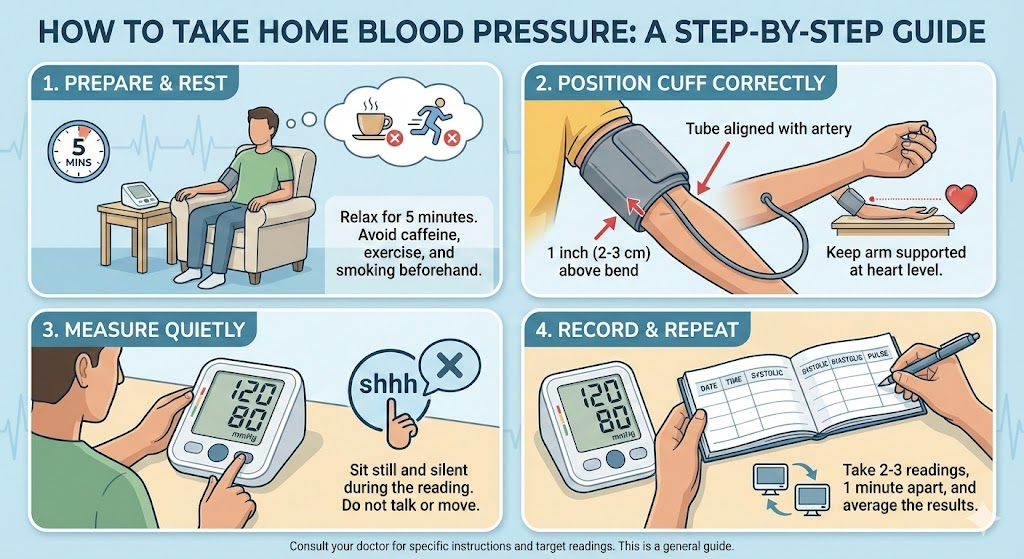High Blood Pressure Basics: Understanding Your Numbers and Taking Control 🩺

Dr. Akash Shah, MD
Founder, StrongHealth DPC
If you've just learned you have high blood pressure, you might feel confused, worried, or overwhelmed. You're not alone—nearly half of American adults have hypertension, and most don't even know it. The good news? With the right information and support, you can take charge of your health and protect your heart for years to come. ❤️
What Do Those Blood Pressure Numbers Really Mean? 🔢
Every blood pressure reading has two numbers, like "120/80." Here's what they mean:
- Systolic (Top number): This is the pressure in your arteries when your heart beats and pumps blood out. Think of it as your heart's "push." 💪
- Diastolic (Bottom number): This is the pressure when your heart relaxes between beats—your heart's "rest." 😌
Example: If your reading is 125/85, 125 is the systolic (push), and 85 is the diastolic (rest).
Why do both numbers matter?
Both numbers give important clues about your heart and blood vessels. High systolic or diastolic pressure can increase your risk for heart attack, stroke, and kidney disease—even if you feel fine. ⚠️🧠
What's a Healthy Blood Pressure? 📊
| Category | Systolic (Top) | Diastolic (Bottom) |
|---|---|---|
| Normal | Less than 120 | Less than 80 |
| Elevated | 120–129 | Less than 80 |
| Stage 1 Hypertension | 130–139 | 80–89 |
| Stage 2 Hypertension | 140 or higher | 90 or higher |
Why do these numbers matter?
High blood pressure is called the "silent killer" because it often causes no symptoms, but can quietly damage your heart, brain, and kidneys over time. That's why knowing your numbers—and tracking them over time—is so important. ⏳🫀
How to Check Your Blood Pressure at Home (and Why It Matters) 🏡
Why check at home?
Home blood pressure monitoring is one of the best ways to stay on top of your health. It helps you and your care team see the "big picture," not just a single reading at the doctor's office. According to the latest research, home monitoring—especially when combined with team-based care—leads to better blood pressure control and fewer complications. 📝
How to get the most accurate reading:
- Rest first: Sit quietly for 5 minutes before you start. No talking, texting, or multitasking. 🛑📵
- Sit the right way: Back supported, feet flat, legs uncrossed. 🪑
- Bare your arm: Place the cuff on your bare upper arm (not over clothing). 💪
- Arm at heart level: Rest your arm on a table so the cuff is level with your heart. 🫀
- Take two readings: Wait a minute between them, and write both down. ✍️
- Be consistent: Try to check at the same time each day, and bring your log to your appointments. 📅
Pro tip: Avoid caffeine, smoking, or exercise for 30 minutes before checking—these can make your numbers look higher than they really are. 🚫☕🚬🏃

Consult your doctor for specific instructions and target readings. This is a general guide.
Why Team-Based Care Works 🤝
Managing high blood pressure is easier with a team. Your care team might include your primary care doctor, nurses, pharmacists, and even community health workers. This approach helps you get answers, adjust medications quickly, and stay motivated. Studies show that team-based care and regular follow-up lead to better blood pressure control and fewer complications. 👩⚕️👨⚕️💊
What Can You Do Next? 💪
- Track your numbers: Use a notebook or an app to record your readings. 📓📲
- Share your log: Bring your numbers to every appointment. 👨⚕️🗂
- Ask questions: No question is too small—your care team is here to help. ❓
- Take small steps: Even small changes in diet, activity, or stress can make a big difference. 🥗🏃♂️🧘
You're Not Alone 🤗
Remember, high blood pressure is common—and manageable. With the right support, you can protect your heart and live your life to the fullest. 🌟
What's one thing you'd like to know or try when it comes to your blood pressure? Bring it to your next visit—we're here to help you every step of the way. 💬
Medical Disclaimer ⚖️
This blog is for informational purposes only and does not replace medical advice. Always consult your physician or qualified health provider with questions about your numbers, medications, or care.
Reference: Muntner P, Shimbo D, Carey RM, et al. Achieving Optimal Hypertension Control Through Team-Based Care, Home Blood Pressure Monitoring, and Patient Engagement: A Science Advisory From the American Heart Association, the American College of Cardiology, and the Centers for Disease Control and Prevention. Circulation. 2023;148:e1–e17.
Related Articles
Welcome to StrongHealth DPC
Learn why Dr. Shah started StrongHealth DPC and how team-based care makes all the difference in your health journey.
Read ArticleRising Healthcare Costs & Insurance Fatigue
Discover why Direct Primary Care is an affordable alternative to traditional insurance in today's expensive healthcare landscape.
Read Article